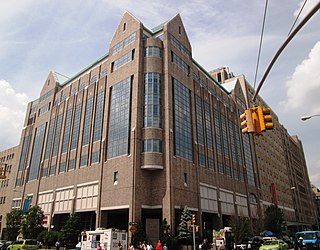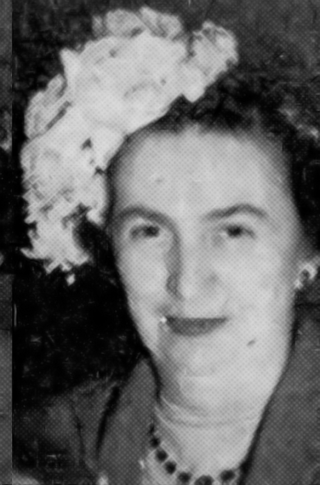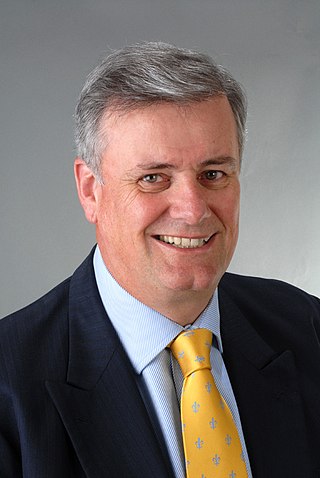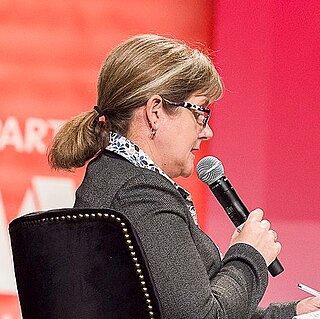Related Research Articles

Cerebral palsy (CP) is a group of movement disorders that appear in early childhood. Signs and symptoms vary among people and over time, but include poor coordination, stiff muscles, weak muscles, and tremors. There may be problems with sensation, vision, hearing, and speaking. Often, babies with cerebral palsy do not roll over, sit, crawl or walk as early as other children of their age. Other symptoms include seizures and problems with thinking or reasoning, each of which occur in about one-third of people with CP. While symptoms may get more noticeable over the first few years of life, underlying problems do not worsen over time.

Fiona Juliet Stanley is an Australian epidemiologist noted for her public health work, her research into child and maternal health as well as birth disorders such as cerebral palsy. Stanley is the patron of the Telethon Kids Institute and a distinguished professorial fellow in the School of Paediatrics and Child Health at the University of Western Australia. From 1990 to December 2011 she was the founding director of Telethon Kids.

The University of Notre Dame Australia (UNDA), also known colloquially as Notre Dame University, is a national Roman Catholic private university in Australia with campuses in Fremantle and Broome in Western Australia and Sydney in New South Wales. Its campuses are notable for its restored late Georgian, Victorian and Edwardian-style architecture, most of which is ubiquitous in Fremantle's West End heritage area as a university town. The university was established by an act of the Parliament of Western Australia in 1989.
Perinatal asphyxia is the medical condition resulting from deprivation of oxygen to a newborn infant that lasts long enough during the birth process to cause physical harm, usually to the brain. It remains a serious condition which causes significant mortality and morbidity. It is also the inability to establish and sustain adequate or spontaneous respiration upon delivery of the newborn, an emergency condition that requires adequate and quick resuscitation measures. Perinatal asphyxia is also an oxygen deficit from the 28th week of gestation to the first seven days following delivery. It is also an insult to the fetus or newborn due to lack of oxygen or lack of perfusion to various organs and may be associated with a lack of ventilation. In accordance with WHO, perinatal asphyxia is characterised by: profound metabolic acidosis, with a pH less than 7.20 on umbilical cord arterial blood sample, persistence of an Apgar score of 3 at the 5th minute, clinical neurologic sequelae in the immediate neonatal period, or evidence of multiorgan system dysfunction in the immediate neonatal period. Hypoxic damage can occur to most of the infant's organs, but brain damage is of most concern and perhaps the least likely to quickly or completely heal. In more pronounced cases, an infant will survive, but with damage to the brain manifested as either mental, such as developmental delay or intellectual disability, or physical, such as spasticity.
The Telethon Kids Institute is an Australian medical research institute focused on the prevention of paediatric disease and the development of improved treatments to improve the health and wellbeing of children. Telethon Kids has developed a particular focus on Aboriginal health and has more than 500 staff, post-graduate students and visiting scholars. Telethon Kids is located in the Perth suburb of Nedlands, in the Perth Children's Hospital building. Telethon Kids is an independent not-for-profit, non-government organisation with close affiliations with the University of Western Australia and the Perth Children's Hospital. It is named after the Channel Seven Perth Telethon.

Morgan Stanley Children's Hospital of NewYork-Presbyterian is a women's and children's hospital at 3959 Broadway, near West 165th Street, in the Washington Heights neighborhood of Manhattan, New York City. It is a part of NewYork-Presbyterian Hospital and the Columbia University Irving Medical Center. The hospital treats patients aged 0–21 from New York City and around the world. The hospital features a dedicated regional ACS designated pediatric Level 1 Trauma Center and is named after financial firm Morgan Stanley, which largely funded its construction through philanthropy.
Cerebral Palsy Alliance is an Australian nonprofit organisation helping babies, children, teenagers and adults living with cerebral palsy and other neurological and physical disabilities. Its therapy teams work with individuals and families to maximise their participation in the community.

Tanya Mary Monro is an Australian physicist known for her work in photonics. She has been Australia's Chief Defence Scientist since 8 March 2019. Prior to that she was the Deputy Vice Chancellor, Research and Innovation (DVCR&I) at the University of South Australia. She was awarded the ARC Georgina Sweet Australian Laureate Fellowship in 2013. She was the inaugural chair of photonics, the inaugural director of the ARC Centre of Excellence for Nanoscale Biophotonics and the inaugural director of the Institute for Photonics & Advanced Sensing (IPAS), and the inaugural director of the Centre of Expertise in Photonics (CoEP) within the School of Chemistry and Physics at the University of Adelaide. Monro has remained an adjunct professor of physics at the University of Adelaide following her departure from the institution. In 2020 she was awarded the title of Emeritus Professor at the University of South Australia.

Claudia Portia Burton Bradley was an orthopaedist, paediatrician and pharmacist. Her main area of work and research was cerebral palsy, which led her to become the first medical director of the Spastic Centre of New South Wales and the founder of the Australian Cerebral Palsy Association.
Jordan Nguyen is a Vietnamese-Australian biomedical engineer and inventor whose achievements include creating a mind-controlled wheelchair, and whose technological innovations are targeted at improving the lives of those living with physical disabilities. He is a Keynote Speaker and futurist, with strong views on using technology for maximum positive global impact. His work has gained considerable media attention across Australia, featuring on ABC's Catalyst and Channel 10's The Project.

Alastair Harvey MacLennan,, MB ChB, MD, FRCOG, FRANZCOG is a Scottish-Australian physician, professor of obstetrics and gynaecology, medical researcher, and a community health advocate. He studied and practised medicine in Glasgow, Chicago, and Oxford before moving to Australia in 1977 to take up a position at the University of Adelaide, where he went on to become the Professor and Head of the Discipline of Obstetrics and Gynaecology in 2006. He retired from his full-time academic position in 2013, and he is now Emeritus Professor of Medicine. He leads research projects at the Robinson Research Institute, and he is Head of the university's Cerebral Palsy Research Group.
Roberta Barkworth Shepherd is an Australian physiotherapist. She is known for her work on physiotherapy education and research.
Elizabeth Catherine Usher AO (1911–1996) was a speech disorders therapist and academic. She was the first person from Queensland to study speech therapy.

The University of Western Australia Medical School is the medical school of The University of Western Australia, located in Perth, Western Australia. Established in 1957, it is the oldest medical school in Western Australia, with over 6000 alumni. Well known for its research and clinical teaching, the medical school is ranked 8th in the world and 1st in Australia by the 2019 Academic Ranking of World Universities in clinical medicine. The medical school is affiliated with various teaching hospitals in Perth such as Royal Perth Hospital and Sir Charles Gairdner Hospital. The medical school is also heavily affiliated with the Queen Elizabeth II Medical Centre and its various research institutes. The school has prominent researchers and clinicians amongst its faculty and alumni, including Nobel Prize laureates Barry Marshall and Robin Warren ; recipients of the Australian of the Year award Fiona Stanley and Fiona Wood; and cancer researcher Richard Pestell. The school has produced 11 Rhodes Scholars.

Marguerite Virginia Evans-Galea is the co-founder of Women in STEMM Australia. STEMM. Her research is focused on gene therapy and neurodegenerative diseases.

Professor Renae Monique Ryan is the academic director of the Science in Australia Gender Equity (SAGE) Program at the University of Sydney, and a researcher in neuroscience, pharmacology and membrane transport proteins. She argues for systemic change to increase academic diversity.
Jennifer J. Kurinczuk is a British physician who is a Professor of Perinatal Epidemiology and Director of the National Perinatal Epidemiology Unit at the University of Oxford. In 2019 she was named an Honorary Fellow of the Royal College of Obstetricians and Gynaecologists. During the COVID-19 pandemic, Kurinczuk investigated the neonatal complications of coronavirus disease.
Karen Simmer is an Australian paediatrician and professor of Newborn Medicine at the University of Western Australia and is director of two neonatal intensive care units at hospitals in Perth. She also runs the WA Human Milk Bank and is team leader, neonatal gut health, nutrition and development at the Telethon Kids Institute.
Bernadette Tobin is an Australian Catholic ethicist and professor of philosophy. She is the daughter of political activist and journalist B.A. Santamaria.
References
- 1 2 3 4 The University of Sydney. "Professor Nadia Badawi - The University of Sydney". sydney.edu.au. Retrieved 7 August 2018.
- ↑ "Meet the woman who cares for the sickest newborns in Australia". Mamamia. 26 March 2017. Retrieved 7 August 2018.
- 1 2 3 "How Fiona Stanley AC mentored Nadia Badawi | Women's Agenda". Women's Agenda. 28 August 2012. Retrieved 7 August 2018.
- ↑ The University of Western Australia. "Order of Australia Honours". www.convocation.uwa.edu.au. Retrieved 7 August 2018.
- 1 2 "Professor Nadia Badawi AM" . Retrieved 7 August 2018.